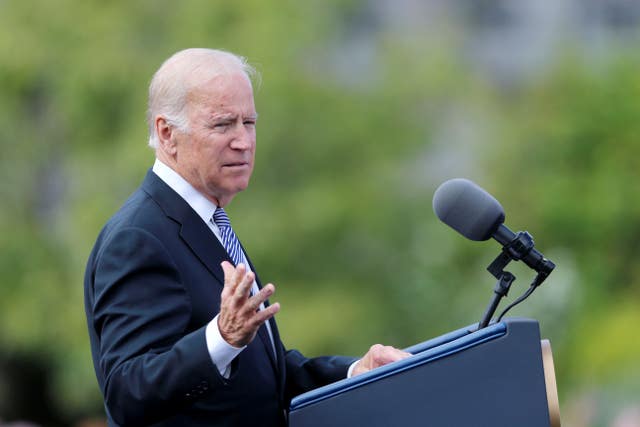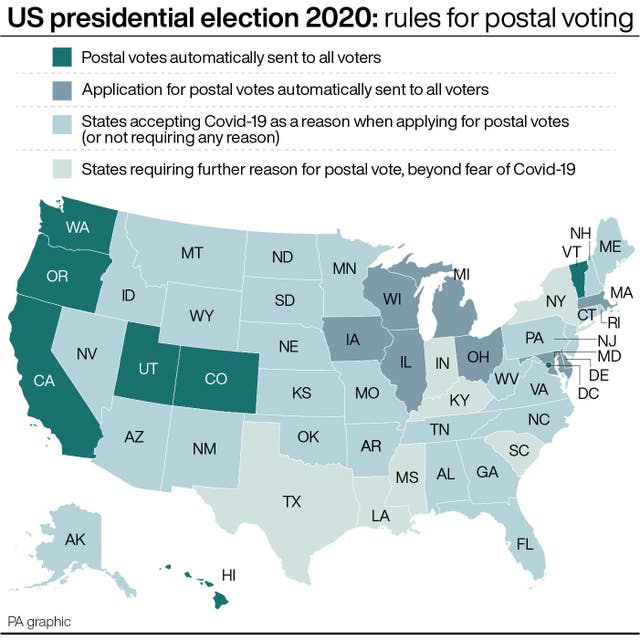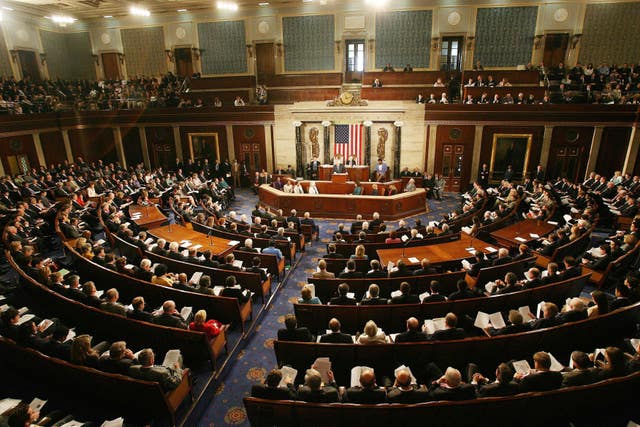How does voting work for the US presidency?
Americans will go to the polls on November 3.

Americans will go to the polls on November 3 to choose their next president in the race between incumbent Republican Donald Trump and Democratic Party nominee Joe Biden.
Ahead of the vote, the PA news agency looks at the process of how a president is picked.
– Who can run for president?
A US president needs to be a natural-born citizen who is over the age of 35 and has lived in the US for 14 years.
– How are candidates picked?
The US presidential election officially begins with the New Hampshire primary, which was held on February 11.
Primary votes and caucuses are how parties in individual states pick their nominee for president ahead of the election.
In a primary election, people vote for delegates who will support a candidate. Meetings are used to nominate delegates in caucuses.
The candidate who has the most delegates for their party will go on to represent the party for the national presidential election.
– How do candidates campaign?
In a typical year, presidential candidates would travel the country canvassing voters as well as taking part in presidential and vice-presidential debates.

Mr Trump has continued to hold large rallies of his supporters but is currently in hospital following a positive Covid-19 test.
Although one debate has been held, it remains unclear what impact the incumbent’s diagnosis will have upon the remaining debates.
– What happens on election day?
Election day is always held on the first Tuesday after November 1.
While millions of people have already voted by post this year, tens of millions more will head to polling booths on November 3.

Instead, the individual votes in a state are typically reflected in votes cast by electors in the Electoral College.
– What is the Electoral College?
Each of the 50 states and Washington DC appoint a number of people in their state known as electors, who make up the Electoral College.
The Electoral College is made up of 538 electors who cast votes on behalf of the population of the state, with 270 votes needed to win the presidency.
The number of people per state is roughly proportionate to the population, as it is based on the number of representatives they have in Congress.

This system can mean that a candidate for president can lose the popular vote but win the election, as seen with Mr Trump in 2016.
The Electoral College is regularly criticised, with some arguing the system gives unfair precedence to states with more electors – though these do have more people in.
Others argue that it gives extra weight to the votes of people in smaller states due to the smaller ratio of votes per elector.
– When do we get a result?
The result of the presidential election is usually announced on election day.

At the end of the recent debate, the current president said the result may not be known for months as the election would be “a fraud like you’ve never seen”.
This was linked to claims Mr Trump has repeatedly made about postal voting fraud, despite little evidence.
The current president has also been criticised after he declined to commit to a peaceful transfer of powers if he loses the election.





